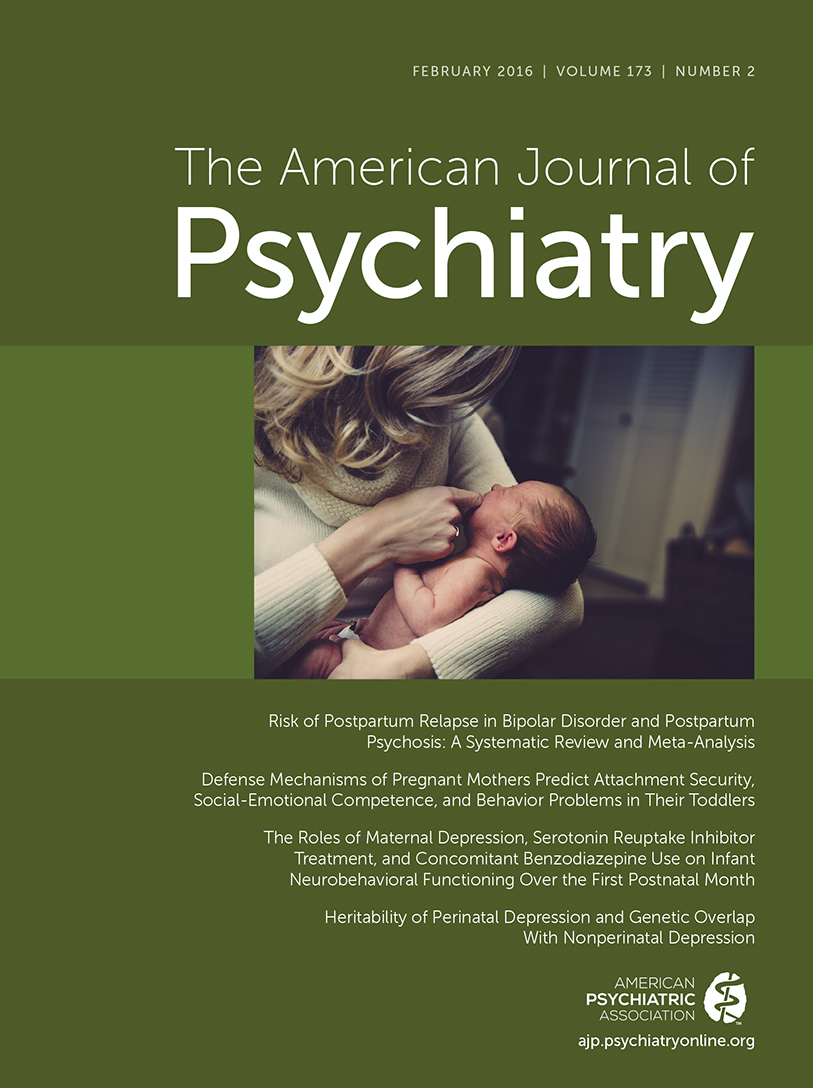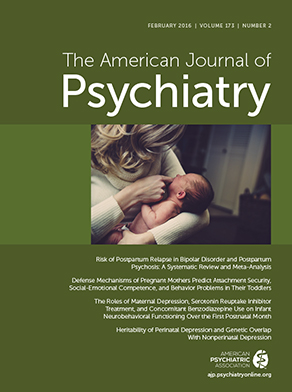One-hundred twenty-two years ago, the language of defense mechanisms entered the psychiatric lexicon with intriguing observations linking motives and conflicting prohibitions against them to phenomena such as obsessions, phobias, and hysterical symptoms (
1). Sigmund Freud chose simple words to describe the function of each defense identified, noting that they kept uncomfortable things out of awareness, while keeping them symbolically on one’s mind. Over the ensuing decades, as our understanding of defenses broadened, many specific defense mechanisms entered everyday lay discourse with meanings that even approximate their technical definitions. When anyone describes a person’s words or behavior as acting out, passive aggression, denial, projection, rationalization, repression, displacement, intellectualization, sublimation, or altruism, they are often not far off. There are even caricatured dialogues that reflect this ubiquity, such as, “You’re in denial,” a common answer to which is “No I’m not.”
While defense mechanisms took their place in the broader culture, they have taken a number of different turns in psychiatry. Defenses developed a rich history in psychoanalytic writings. This then lead to a sustained period of empirical clinical research beginning about four and a half decades ago and continuing to the present. Psychiatry itself has shown more ambivalence about defenses. A recent high point of interest culminated in the inclusion of a provisional defense axis in Appendix B of DSM-IV. Defenses were defined as automatic psychological responses to internal and external stressors, anxiety, and conflict. As fundamental mechanisms of personality functioning, they underlie a wide variety of psychological phenomena both healthy and psychopathological. However, despite a wealth of advances in research in the intervening two decades, the latest edition of DSM is silent on the topic. The article in this issue of the
Journal by Porcerelli and colleagues (
2) reminds us that defenses have significant effects on others.
Imagine a common scenario in two different households with an infant. The mothers are each awakened in the middle of the night when their infants cry. In one instance the mother, feeling sleepy, begins to attend to what awoke the child (e.g., hunger, needing changing, fever). She then says to the child, “Why don’t you want me to get a good night’s sleep?”—attributing to her child a malevolent intention, reflecting discomfort over her own annoyance at being awakened. The child and mother take awhile to settle down, but eventually both go back to sleep. A second mother is similarly awakened, and as she attends to the child, she begins to hum one of her favorite lullabies and thereby sings both herself and the baby back to sleep, perhaps sooner.
Anyone with a child can readily identify with both mothers. In the first instance, the mother disavows some negative feelings toward the child about being awakened (maybe even sleep-deprived) but instead misattributes it to the child, as if the child wishes her not to sleep. This reflects the defense of projection, one of the disavowal defenses like denial and rationalization. In the second instance, the mother deals with her discomfort by focusing on soothing the child, and she herself is soothed as well. This is the defense of altruism, a high adaptive or mature defense like suppression or sublimation.
Now imagine a daytime occasion with the same two mother-infant pairs in which each mother sees her toddler picking up a sharp object. As the first mother removes the object and hands the child a safer toy to explore, the toddler cries disconsolately and throws the substituted toy on the floor. The child cries again, protesting when the mother leaves the room. By contrast, the second mother spies the same scenario and, while removing the sharp object, also substitutes a toy. The child begins to examine it intently. When the mother leaves the room, the child continues to play contentedly. The study by Porcerelli et al. (
2) suggests that there may be a link between these two types of mother-infant scenarios. The mothers’ defenses affect the mothers’ levels of adaptation in parenting and in turn affect the child’s social-emotional competence, attachment security, and behavior problems.
This is the first study of which I am aware that prospectively examined the relationship between maternal defenses during pregnancy with the subsequent attachment security and emotional development of the child 2 years after birth. While still a correlational rather than an experimental design, the prospective time-frame moves us closer to understanding the potential moderating effect of maternal defenses on child development. The 2-year prospective period rules out reverse causation. As such, this is a landmark study. One may question how the mother’s defenses assessed during the last trimester can correlate with infant development more than 2 years later, especially because defenses are dynamic and responsive to stresses, which vary over time. However, the link between these time periods is that each individual has a repertoire of defenses that is relatively stable over time, with trait effects (repeated use over time) explaining about 30% more variance than state changes (e.g., responses to stresses of the day) when measured week to week (
3). Thus, the defenses used by a pregnant mother during the research interview about her yet unborn child are ones she is likely to use across time.
The authors offer a clear rationale for the study, examining the relationship between defensive functioning and child development—particularly secure attachment—centered on the idea of the value of maternal high adaptive defensive functioning in which stress and conflict are not distorted or ignored, but dealt with directly. The authors chose a group of high-risk mothers (single parent, low income, low support), not recruited for psychiatric illness, which maximizes the likelihood of detecting effects of maternal characteristics on the child. The design, choice of instruments, procedures (including observed mother-child interactions at 2 years), and attention to interrater reliability and accuracy of assessment are all at a high standard. The data-analytic procedures are stringent. The authors controlled for potential confounding variables, such as income and psychological or physical abuse by a partner. Thus the findings are strong.
As hypothesized, mature or high adaptive maternal defenses were associated subsequently with greater toddler attachment security and social/emotional competence and lower behavior problems. These defenses promote appreciation of the child’s state of mind (mentalization or reflective functioning) and more sensitive caregiving. By contrast, disavowal defenses (denial, rationalization, projection) were associated with poorer toddler attachment security and social-emotional competence. These defenses teach the child that his or her own subjective world is not perceived accurately by the mother, honest communication not accepted, and that he or she may have to accept being ignored or even taking the rap when the mother finds the child stressful. The percentages of all defenses attributed to the mature (31.6%) and disavowal (18.5%) defenses were based on an average of only about 17 defenses occurring in the mother’s interview. Strikingly, these percentages closely match those from an unrelated study of healthy community mothers and mothers with a history of breast cancer (mature, 35.5% and 30.7%, respectively; disavowal, 11.6% and 16.0%, respectively), offering convergent validation of the authors’ defense findings (
4). Interestingly, in that study, mothers showed significantly higher defensive functioning with their child than with others, including their partners, which highlights the salience of the mother-child bond; nonetheless, more mature defensive functioning was also associated with better marital adjustment.
In recent yeas we have come to know a lot about defenses both in fundamental and clinical research. Defensive functioning improves with short-term (
5), medium-term (
6), and long-term (
7) psychotherapy, psychoanalysis (
8), and group therapy (
9), and such defense changes correlate with improvement in symptoms and functioning. Furthermore, knowledge of how to work with defenses has continued to grow (
10) as the science accumulates. The report by Porcerelli et al. is a valuable addition to that science.

